Santa Marta is a charming spot full of history on the Caribbean coast which is the perfect base for exploring the amazing variety of the region.
It is a great place to visit for a couple of days learning about the culture and relaxing on the beach or it can be where you start your adventure in the Sierra Nevada mountain range or along the coast of the Tayrona National Natural Park.
I have lived in Medellin for over 15 years and Santa Marta has long been my preferred beach destination. In this article, I will give my recommendations on how to make the most of your time in this beautiful part of the country.
Getting to and Around Santa Marta
Santa Marta’s Simon Bolivar International Airport is operated by Avianca, Wingo and LATAM. The vast majority of flights are to Bogota but you can also find some flights to Medellin and Cali each day. A taxi from the airport to the city takes around 30 minutes and has a set price of 30,000 COP (US$7.70) or you can take a bus for 2,000 COP (US$0.50) which takes closer to 45 minutes.
One of the best things about visiting Santa Marta is exploring the surrounding area. Some destinations like Parque Tayrona are cheaply and easily accessible by bus but others such as Minca will need a taxi. One option is renting a car. I usually wouldn’t encourage people to do this as the roads can be tricky, with at times poorly maintained roads and very aggressive drivers.
That said, Santa Marta may be one of the places where you can make good use of a rented car. You can drive to Tayrona, Minca, head along the coast plus get to and from the airport. I would just go for taxis and buses but it is a convenient, flexible option with prices starting around US$40 per day.
2-Day Itinerary in Santa Marta
Day 1: Exploring the City
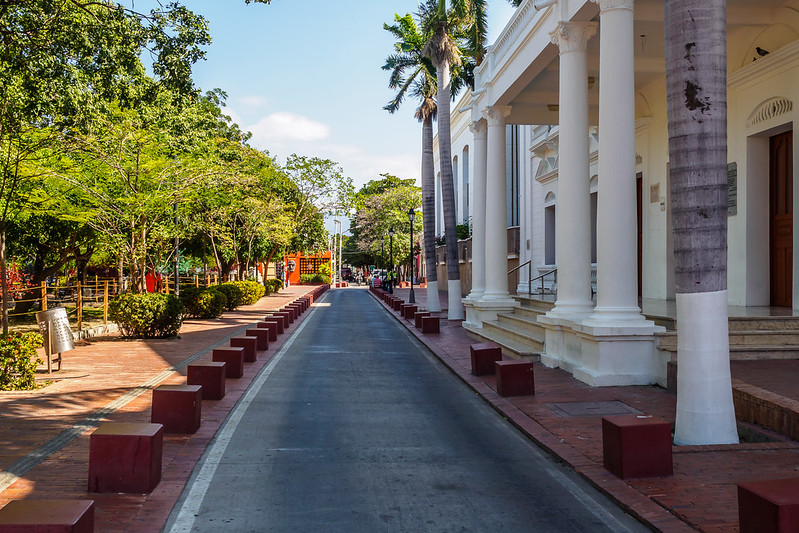
The heart of Santa Marta isn’t as grandiose or famed as that of fellow coastal city Cartagena but it still has rich culture, history and some beautiful sights. Much of Santa Marta was destroyed in a 1834 earthquake, so many of the oldest buildings are gone. It was rebuilt and the population has grown, moving out from just the central downtown area.
The Tairona Gold Museum is a great place to start to learn about the history and the culture of the city. While its name suggests a focus on the rich, varied culture of the pre-colonial Tairona people, the museum tells the full story of the region up until the independence movement led by Simon Bolivar and beyond. I found really fascinating information about how club Deportivo Samarios built a strong team made up of locals and Eastern Europeans who stayed in Colombia when their club was disbanded midway through a South American tour.
You can also visit the Quinta de San Pedro Alejandrino which was built in 1608. This was the final resting place of Simon Bolivar, one of the most important figures in the history of South America. It was once a working estate where rum, honey and panela was produced but today is a museum with well-maintained grounds.
Catedral Basílica is another important site and is the oldest cathedral in the country. It was constructed in Renaissance Roman style in the 18th century and is where the heart of Simon Bolivar was taken after his death.
Parque de los Novios is a popular place in the evening with lots of nice bars and restaurants. The central square is lit nicely and it is a good place to hang out. Ouzo restaurant is particularly good with beautiful, classic interiors and delicious Mediterranean food.
Finally, you can visit the Marina at sunset for a cool drink and a beautiful view with everything lit in a rich orange light. Sunsets in Santa Marta are amazing. I once enjoyed one in the pool of a hotel overlooking the marina and it was a special moment.
Day 2: Beach and Nature
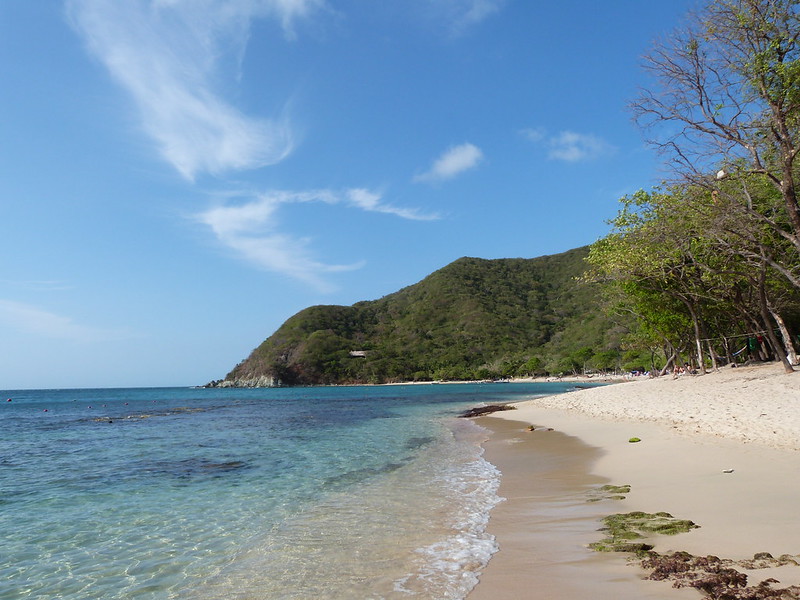
Just down the coast from downtown Santa Marta is Rodadero, an area with nice apartments and white sanded beach. The beach is surrounded by green hills and is a convenient place to enjoy some sun, sand and sea. There are a fair few sellers walking up and down who can be quite annoyingly insistent but, that aside, it is a good spot.
Rodadero also has an aquarium and museum. This includes a wide variety of fish and dolphin shows, which you will either enjoy or disapprove of. There are also a good range of restaurants and you can rent boats on the beach.
This is an easy, convenient option for a short stay in Santa Marta but to see the best of the nature on offer it is worth exploring further afield, if you can find the time.
3-Day Itinerary: Adding Tayrona National Park
Day 3: Adventure in Tayrona

Tayrona National Natural Park covers 150km of largely untouched forest, coast and sea. There are a good range of beaches but Piscina and Cabo San Juan are the most visited. You can reach both of these by following a trail through the jungle where you will see monkeys swinging in the trees and some of the 300 bird species.
The main entrance to Tayrona is accessible by bus (US$3) from downtown Santa Marta or in a taxi (US$20). Final entry is at 4pm and for foreign visitors it is 68,500 COP (US$17.50) per person. Once you pass the main entrance you have the option to walk or take a minibus 10 minutes into the park before you take the rest of the trail on your own.
You can return to the same entrance or get a speedboat over to Taganga and then a taxi home. Alternatively, it is also possible to stay the night on the beach in a tent or a hammock. The heat can be quite intense in a tent and the mosquitos love the visitors in the hammocks. That said, once most people have left it is far more peaceful and it is a beautiful place to wake up in the morning. There are limited restaurant options but you will find food and drinks during your visit and if you stay overnight.
5-Day Itinerary: Discovering the Surroundings
Day 4: The Charm of Taganga
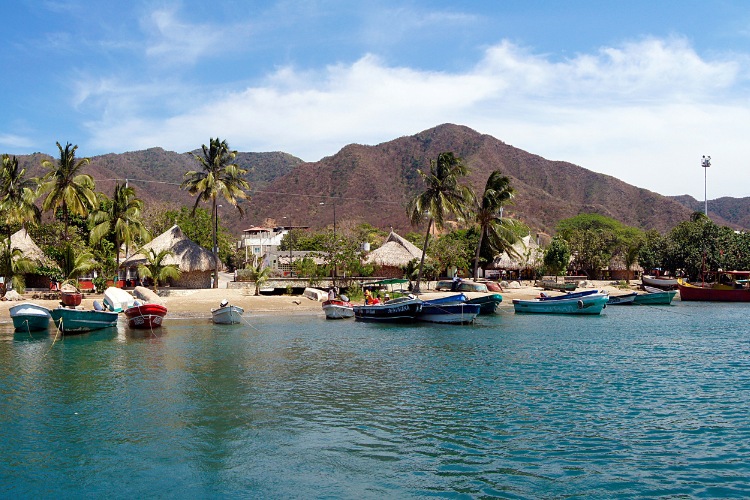
Taganga is a traditional fishing village 10 minutes north of Santa Marta which has become a popular destination for visitors. It is surrounded by tree-covered mountains on all sides and has a decent beach in the bay.
The calm waters close to Taganga make it a good spot for scuba diving or snorkeling. Prices are very reasonable and many people choose to take their PADI certification here as it is cheaper than elsewhere in the country.
You can go on a fishing trip to catch your own dinner or just opt for some delicious seafood at one of the restaurants.
It can be quite busy and in the last decade, it has become a very popular backpacking spot, with all of the good and bad that comes with this. The sleepy fishing town is definitely much more lively but it can also be a lot of fun.
Day 5: The Beauty of Minca

Colombia’s Sierra Nevada has snow-capped peaks overlooking tropical beaches. It is a really rich and diverse environment which is great to explore. I wouldn’t recommend heading up that far but Minca is an excellent option for night or a very busy day.
Minca is a 35-minute drive up the hill and through the forest. When you arrive you will find a small but welcoming town with a couple of main streets with restaurants and cafes. You can stay in the town or one of the excellent hotels which are a short walk away.
The views down the valley to the beach are spectacular and at our hotel hummingbirds would fly around and charm visitors at breakfast.
From Minca you can swim and explore the rivers and jump down the Marinka waterfalls. It is also possible to get a guided tour of the working coffee farms and learn about the process. Despite being close to Santa Marta, the experience in Minca is really different. The air is cooler and it really feels like a new location.
7-Day Itinerary: The Complete Experience
Day 6: Adventure in Palomino
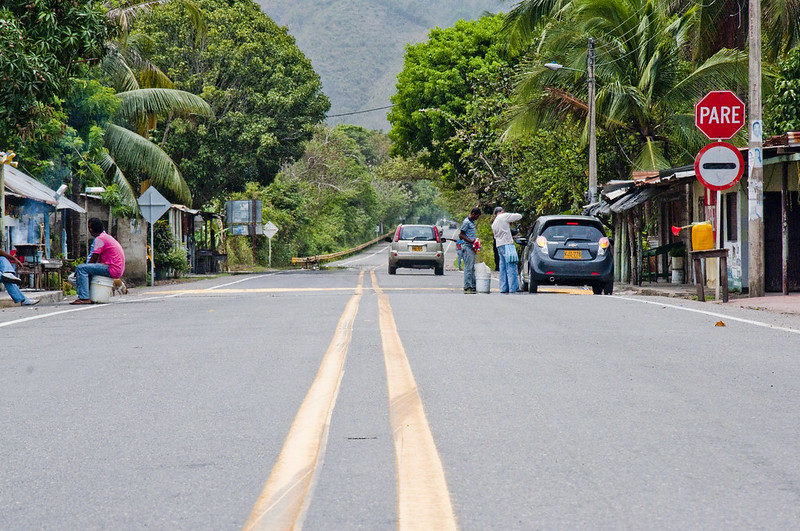
Palomino is a very relaxing town further down the coast. It has a beach with white sands, some small balls with cocktails, yoga and small hostels. The roads are dusty and most of the buildings are made of wood with tourism growing quickly but from a fairly low base.
It is a great spot for surfing, kite surfing or tubing along the river, which costs around 25,000 COP (US$6.40) per person with a guide. Palomino is a very relaxing slice of paradise with activities to keep you entertained or beautiful beaches where you can unwind.
Day 7: Cultural Exploration
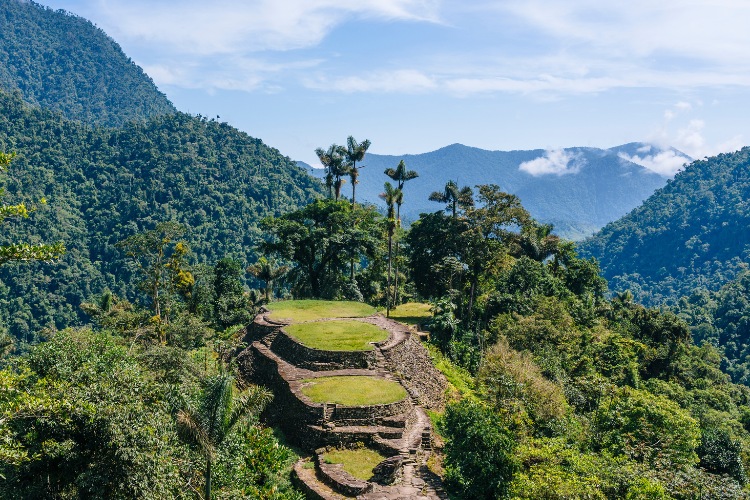
If you travel 56 km along the coast you will reach Taironaka, a fairly unknown nature reserve at the foot of the Sierra Nevada. It is very peaceful and relaxing with the chance to explore the natural environment and learn about the rich cultures and history of the Tagangas, Gayras and Koguis indigenous population.
There is the Tayrona Museum and you can stay the night in one of the comfortable cabins. This offers the sort of insight you can enjoy on the full Lost City trek without the larger cost and substantial physical exertion. You can also head down to the Don Diego River and take a boat deeper into the forest.
Alternative Activities and Day Trips
There are other activities which are highly recommended but may take a larger share of your time if you are only visiting the region for a few days.
The Lost City Trek takes 3, 4 or 5 days but is an incredible experience. You travel in a group with a guide into the jungle to the ancient lost city of the Tairona people. It truly is one of the world’s great wonders and the unique, untouched natural setting makes it feel like a real adventure.
You will climb up and down steep hills, wade through rivers, meet local indigenous families and finally climb 1,200 stairs to arrive at the capital of a lost ancient empire.
If you head north of Santa Marta 4 or 5 hours you will reach the state of La Guajira. The region has amazing quiet beaches, a rich indigenous culture and large sandy dunes. It is a great spot for surfing and windsurfing plus you can buy amazing artisan goods from the celebrated local community.
Tourism is still growing in the region but it is becoming increasingly popular. You won’t find fancy hotels but you will encounter remarkable landscapes, beautiful beaches and a warm local welcome.
You also always have the option to travel 4 or 5 hours south along the coast to the world-famous tourist destination Cartagena. The incredible walled city is rich in history plus there are great bars and restaurants.
Finally, Mompox is an amazing town which was named a UNESCO World Heritage site in 1995. Once a key strategic center of the Spanish empire, it has remained almost unchanged since and is almost frozen in time. A storage point for gold acquired in the region, great artisans settled and produced amazing pieces.
The town has 5 churches, mansions and cemeteries full of great character and history. Mompox is an important site during Colombian Semana Santa (holy week) plus they have a great Jazz festival in October.
FAQ
➡️ What is the best time of year to visit Santa Marta?
The dry season in Santa Marta is from December to April and June to September. This is when you will get less rain and the sea will be calmer. Tayrona is closed to visitors the first half of February, the first half of June and the second half of October. Also, domestic tourism will increase significantly in December until early January for school holidays.
➡️ Can I visit Tayrona National Park and the Lost City in a short trip?
The Lost City will take 3, 4 or 5 days and involves a lot of walking. I would still recommend also doing Tayrona in a day if you have time and feel up for it. The two are complimentary with Tayrona offering the chance to go to the beach and swim in the sea but some visitors may choose one of the other.
➡️ What are the must-try local dishes in Santa Marta?
Seafood is obviously a great place to start. Fried fish, coconut-flavored rice and patacon (fried plantain) is a delicious lunch option or you could opt for shrimp cocktail, fish stew or a ceviche. Arepa with egg filling is a popular local snack and they love to use yuca (a vegetable also known as cassava) in a range of dishes.
➡️ How safe is Santa Marta for tourists?
You should take the usual precautions when visiting a small city with a lot of inequality. Tourists usually only have a positive experience but you should be sensible about your belongings, don’t walk alone outside of the busier areas at night and don’t show your wealth too much on the street.
I have never had any issues in Santa Marta but pickpockets and robberies do happen so it is best to be careful.
➡️ What are the top beaches to visit in Santa Marta?
The best beaches are generally all within Parque Tayrona and it is definitely worth heading out that way if possible. That aside, Rodadero is nice if a little busy and Taganga has some charm, even if the rising number of backpackers has changed the feel somewhat.
➡️ Is it easy to find English-speaking guides in Santa Marta?
It is definitely possible to find English-speaking guides in Santa Marta for most activities. This can include the Lost City trek, guided city tours, coffee tour in Minca and other day trips. It is important to check and request as they may have to ensure an English speaker is available but with a little planning, you should have no issue.
